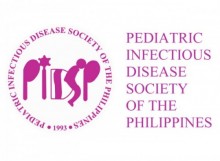Journal 2017 Vol.18 No.2
A Retrospective Study on Sensitivity, Specificity, Negative Predictive Value, Positive Predictive Value of TB PCR Versus TB Culture in Diagnosing Tuberculosis in Filipino Children Aged 3 Months to 18 Years at a Tertiary Care Center
Jesanel B. Ancheta, M.D., Robert Dennis J. Garcia, M.D.
Jesanel B. Ancheta, M.D., Robert Dennis J. Garcia, M.D.
Abstract
Objectives: This study aimed to establish the accuracy of TB PCR versus TB culture and rifampicin resistance detection by PCR versus conventional susceptibility testing of body fluids in diagnosing tuberculosis in pediatric patients 3 months to 18 years with suspected tuberculous disease at a tertiary care center.
Methods: This is a retrospective analytical study of patients seen between January 1, 2012 to May 31, 2017, with clinical and radiographic features suggestive of tuberculosis, who had diagnostic testing of body fluids for TB PCR and TB culture.
Results: Among 159 patients suspected of TB, 46 (28%) tested positive by PCR, of which one was rifampicin-resistant. The sensitivity, specificity, positive predictive value and negative predictive values of TB PCR, using TB culture as the gold standard were 90%, 91.6%, 78.3%, and 96.5% respectively. The sensitivity, specificity, positive predictive value, and negative predictive values of TB PCR for detecting rifampicin resistance, using TB culture and sensitivity as the gold standard, were 33%, 100%, 100%, and 95%, respectively. Overall, the accuracy of TB PCR in detecting TB disease is 91.2% and the accuracy of TB PCR in detecting rifampicin resistance is 95%.
Conclusion: Findings in our study suggest that TB PCR play an important role in TB disease diagnosis, but clinical and radiological assessment continue to be essential in the diagnosis of childhood tuberculosis. The accuracy of TB PCR in detecting TB disease in children is 91.2% and the accuracy of TB PCR in detecting Rifampicin resistance is 95%.
